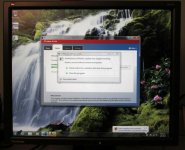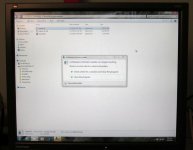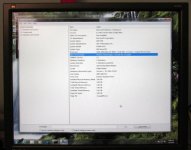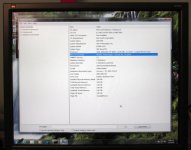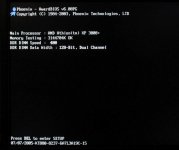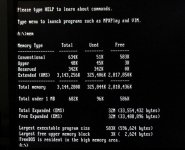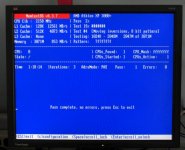clh333
Veteran Member
I'll post this question elsewhere as it pertains to more recent hardware and OS than is germane to the VCF but I know there will be someone here who has an interest, and maybe even a suggestion for how to handle this problem: I have come to the conclusion that I have a BIOS infection on an ABIT KW7 (socket 7 Athlon) motherboard. Here's why: Every attempt I have made to install or update any anti-virus software or definitions update has been unsuccessful.
The machine was built from components around 2005 but I replaced the motherboard a few years ago. I installed Windows XP Pro and ran the machine very little until recently when I hooked it up to make use of its FDDs. In the process I updated a few things, including the AVG anti-virus that had last been updated in 2015. That's when things started going sideways.
The short version of the long story is that not only was I unable to update AVG, but no other anti-virus or anti-malware software has run successfully, either. I wiped the disk (booted Killdisk from a CD and rewrote with zeroes) and reinstalled XP; same story. Wiped again and installed WIN7 this time. All of the hundreds of updates from Microsoft installed successfully, except for the Defender anti-virus update.
I downloaded the manual update of Defender definitions; it halted upon invocation. I tried running in safe mode; no success. Every attempt halted upon execution of the code.
Finally I downloaded Windows Defender Offline, which is a bootable CD with executable and virus definitions on board. The computer, which has often booted from CD in the past, started reading the CD, posted a message "Cannot locate BOOT_MGR" and proceeded to boot from the HD once more.
The only possibility I can think of now is that the BIOS itself (Award BIOS 6.00) is harboring code that intercepts BIOS calls and compares the file name to a list. My next move would be to re-flash the BIOS with an update, but if I do I will eradicate whatever is there without knowing what it was. At least, that's the way it seems to me.
Anyone who has been through this and solved it or has a suggestion for what to try next, I'd welcome your input. Thanks!
-CH-
The machine was built from components around 2005 but I replaced the motherboard a few years ago. I installed Windows XP Pro and ran the machine very little until recently when I hooked it up to make use of its FDDs. In the process I updated a few things, including the AVG anti-virus that had last been updated in 2015. That's when things started going sideways.
The short version of the long story is that not only was I unable to update AVG, but no other anti-virus or anti-malware software has run successfully, either. I wiped the disk (booted Killdisk from a CD and rewrote with zeroes) and reinstalled XP; same story. Wiped again and installed WIN7 this time. All of the hundreds of updates from Microsoft installed successfully, except for the Defender anti-virus update.
I downloaded the manual update of Defender definitions; it halted upon invocation. I tried running in safe mode; no success. Every attempt halted upon execution of the code.
Finally I downloaded Windows Defender Offline, which is a bootable CD with executable and virus definitions on board. The computer, which has often booted from CD in the past, started reading the CD, posted a message "Cannot locate BOOT_MGR" and proceeded to boot from the HD once more.
The only possibility I can think of now is that the BIOS itself (Award BIOS 6.00) is harboring code that intercepts BIOS calls and compares the file name to a list. My next move would be to re-flash the BIOS with an update, but if I do I will eradicate whatever is there without knowing what it was. At least, that's the way it seems to me.
Anyone who has been through this and solved it or has a suggestion for what to try next, I'd welcome your input. Thanks!
-CH-




